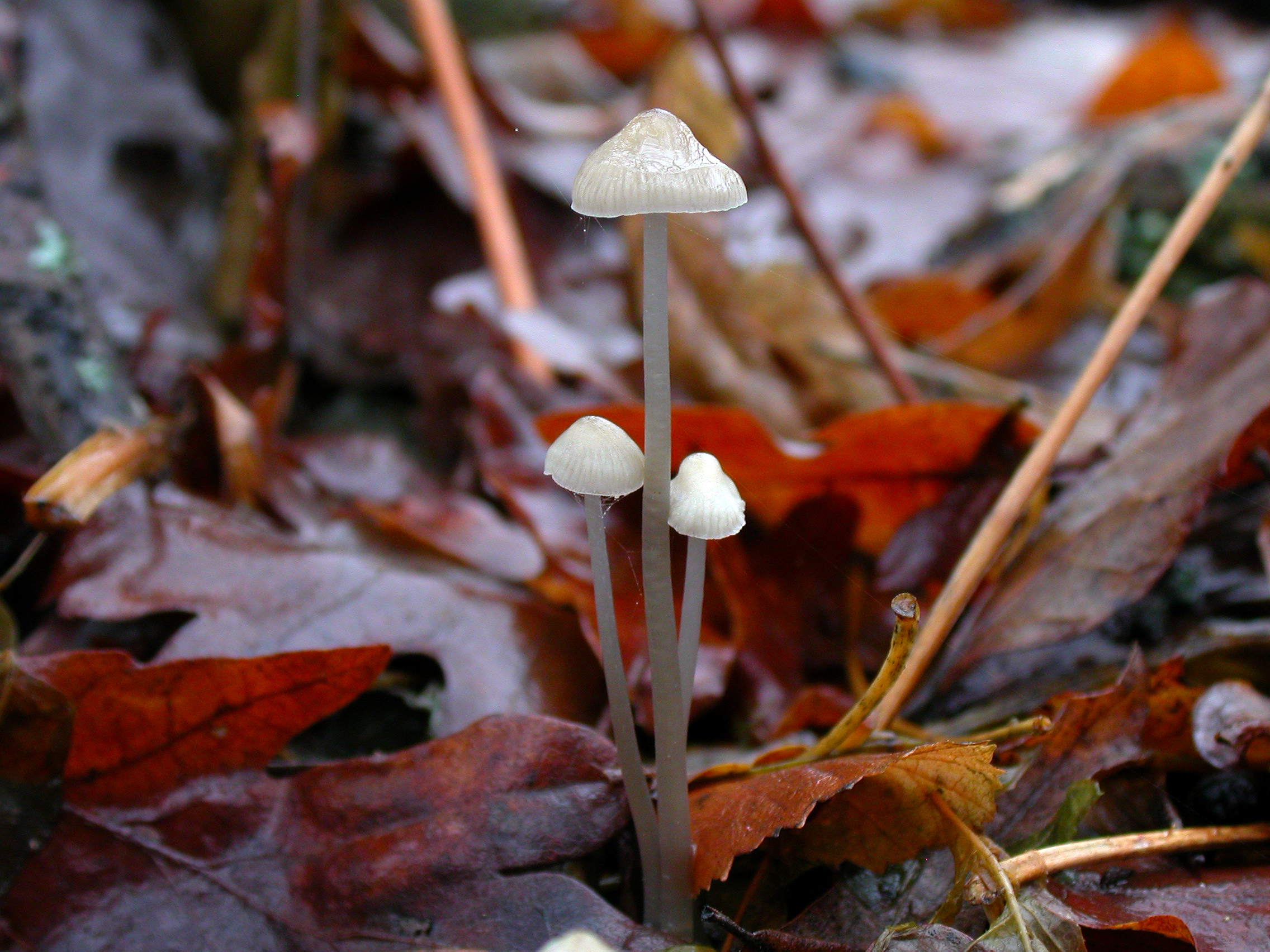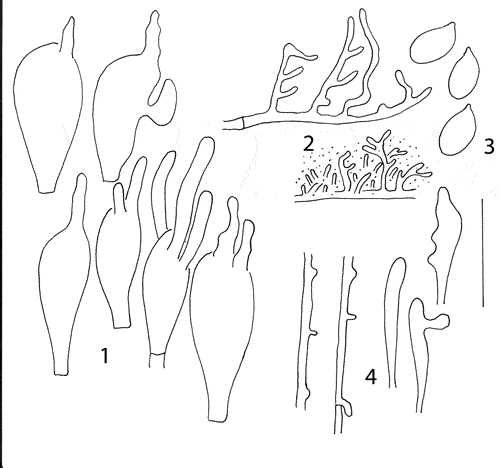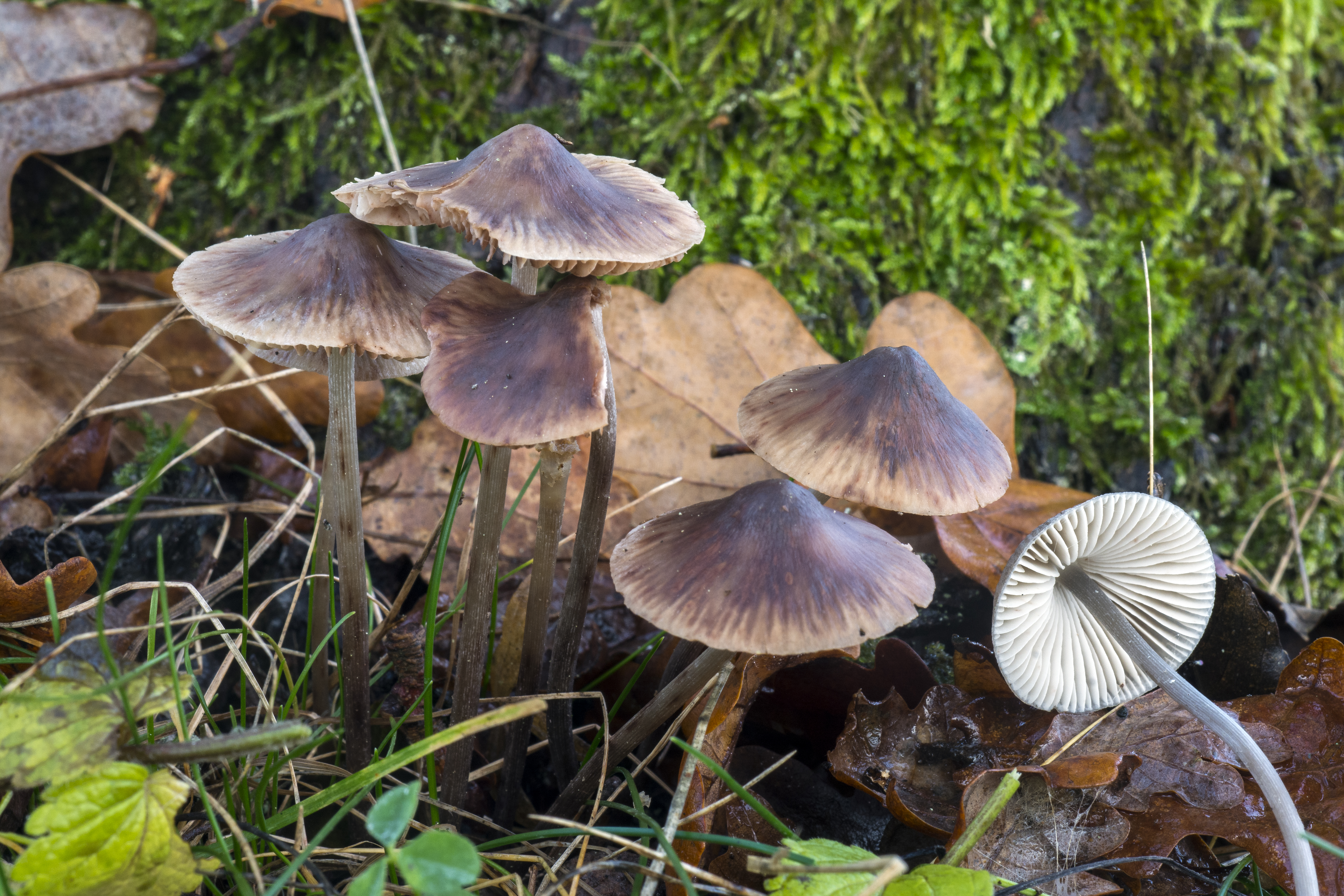Mycena vitilis
Mycena vitilis
Description
1. Cheilocystidia, 2. Hyphae of the pileipellis, 3. Spores, 4. Hyphae of the cortical layer of the stem with terminal cells.
Cap 6-22 mm across, conical to campanulate, flattening with age, sulcate, translucent-striate, glabrous, somewhat lubricous when wet, becoming shiny when dry, grey-brown to pale grey, darker at the centre, paler to almost white at the margin. Gills 14-23 reaching the stem, adnexed to almost free, dorsally intervenose at age, white to whitish, occasionally somewhat brownish, edge concolorous. Stem 30-80 x 1-2 mm, elastic-firm or even tenacious when wet, cartilaginous-brittle when dry, cylindrical, equal to somewhat widening below, pruinose above, glabrous farther down, lubricous to almost viscid when wet, shiny when dry, pale grey-brown, usually with a whitish apex, sometimes with reddish brown spots below, base sometimes rooting, densely covered with long, coarse, flexuous, whitish fibrils. Odour indistinctive. Basidia 28-42 x 9-11.5 µm, clavate, 4-spored, with sterigmata up to 10 µm long. Spores 9.7-12.2 x 5.5-7.5 µm, Q = 1.6-2.1, Qav = 1.7-1.8, pip-shaped, amyloid. Cheilocystidia 15-40(-50) x 5-15 µm, forming a sterile band, clavate, fusiform to lageniform or more irregularly shaped, apically passing into a simple or furcate neck or more often with simple to branched, straight to curved or flexuous, coarse to very coarse excrescences –25 x 2-3.5 µm, in rare cases with no neck or excrescences at all. Pleurocystidia absent. Lamellar trama dextrinoid. Hyphae of the pileipellis 2.5-5 µm wide, covered with scattered to crowded, simple to much branched excrescences 2-20 x 1 ?m which tend to become somewhat gelatinized and form very dense masses. Hyphae of the cortical layer of the stem 2.5-4.5 µm wide, smooth or occasionally sparsely covered with short, cylindrical excrescences, more or less embedded in gelatinous matter, terminal cells generally smooth but occasionally diverticulate and much inflated. Clamps absent or with some abortive clamps.
Ecology and distribution
Solitary or two or three together, rarely more numerous. Growing on small pieces of bark or wood on the ground, or on more or less buried twigs of deciduous trees (mainly Quercus, but also other trees). Summer to autumn. Widely distributed in Norway.


